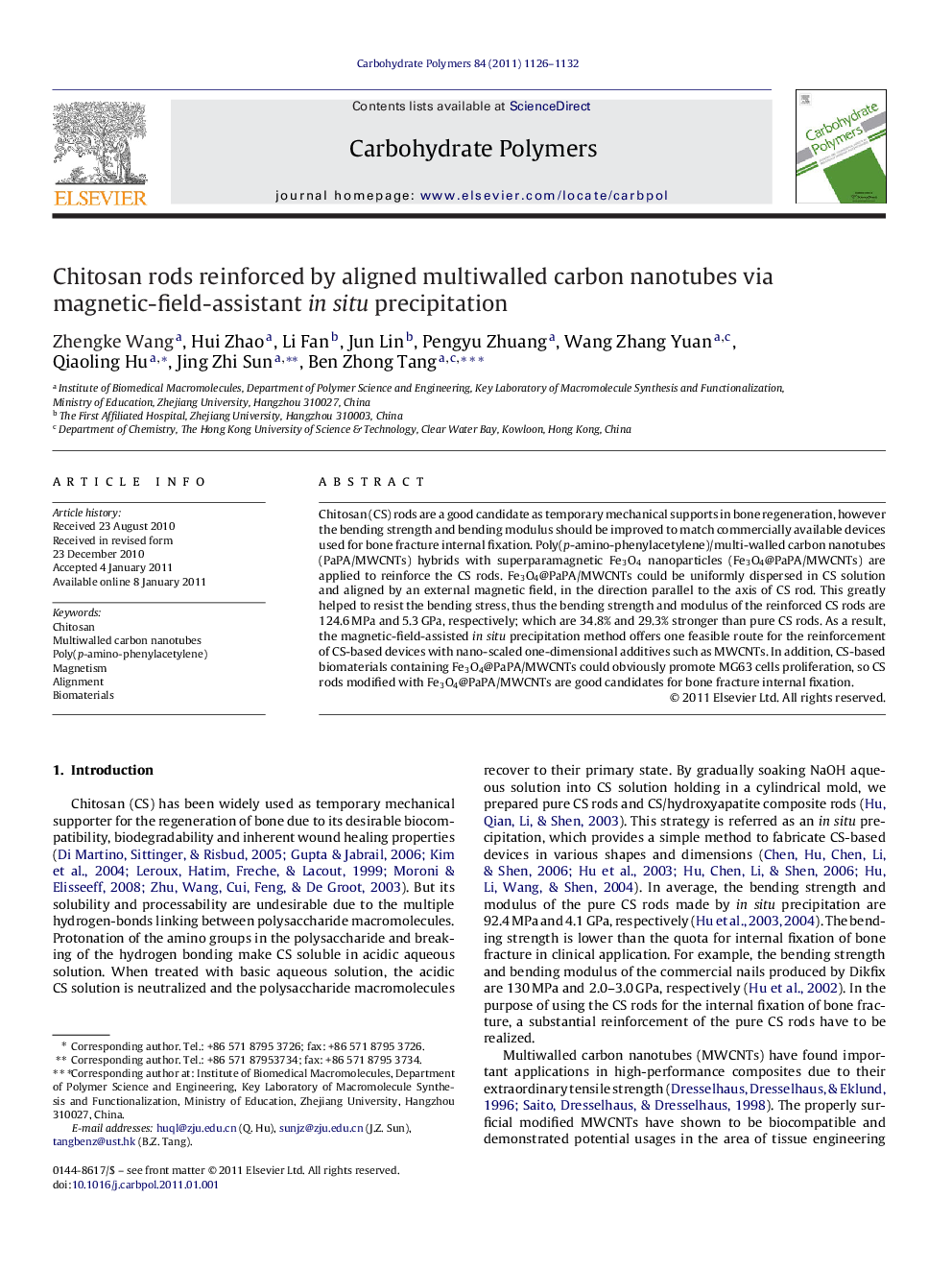| Article ID | Journal | Published Year | Pages | File Type |
|---|---|---|---|---|
| 1386621 | Carbohydrate Polymers | 2011 | 7 Pages |
Chitosan (CS) rods are a good candidate as temporary mechanical supports in bone regeneration, however the bending strength and bending modulus should be improved to match commercially available devices used for bone fracture internal fixation. Poly(p-amino-phenylacetylene)/multi-walled carbon nanotubes (PaPA/MWCNTs) hybrids with superparamagnetic Fe3O4 nanoparticles (Fe3O4@PaPA/MWCNTs) are applied to reinforce the CS rods. Fe3O4@PaPA/MWCNTs could be uniformly dispersed in CS solution and aligned by an external magnetic field, in the direction parallel to the axis of CS rod. This greatly helped to resist the bending stress, thus the bending strength and modulus of the reinforced CS rods are 124.6 MPa and 5.3 GPa, respectively; which are 34.8% and 29.3% stronger than pure CS rods. As a result, the magnetic-field-assisted in situ precipitation method offers one feasible route for the reinforcement of CS-based devices with nano-scaled one-dimensional additives such as MWCNTs. In addition, CS-based biomaterials containing Fe3O4@PaPA/MWCNTs could obviously promote MG63 cells proliferation, so CS rods modified with Fe3O4@PaPA/MWCNTs are good candidates for bone fracture internal fixation.
